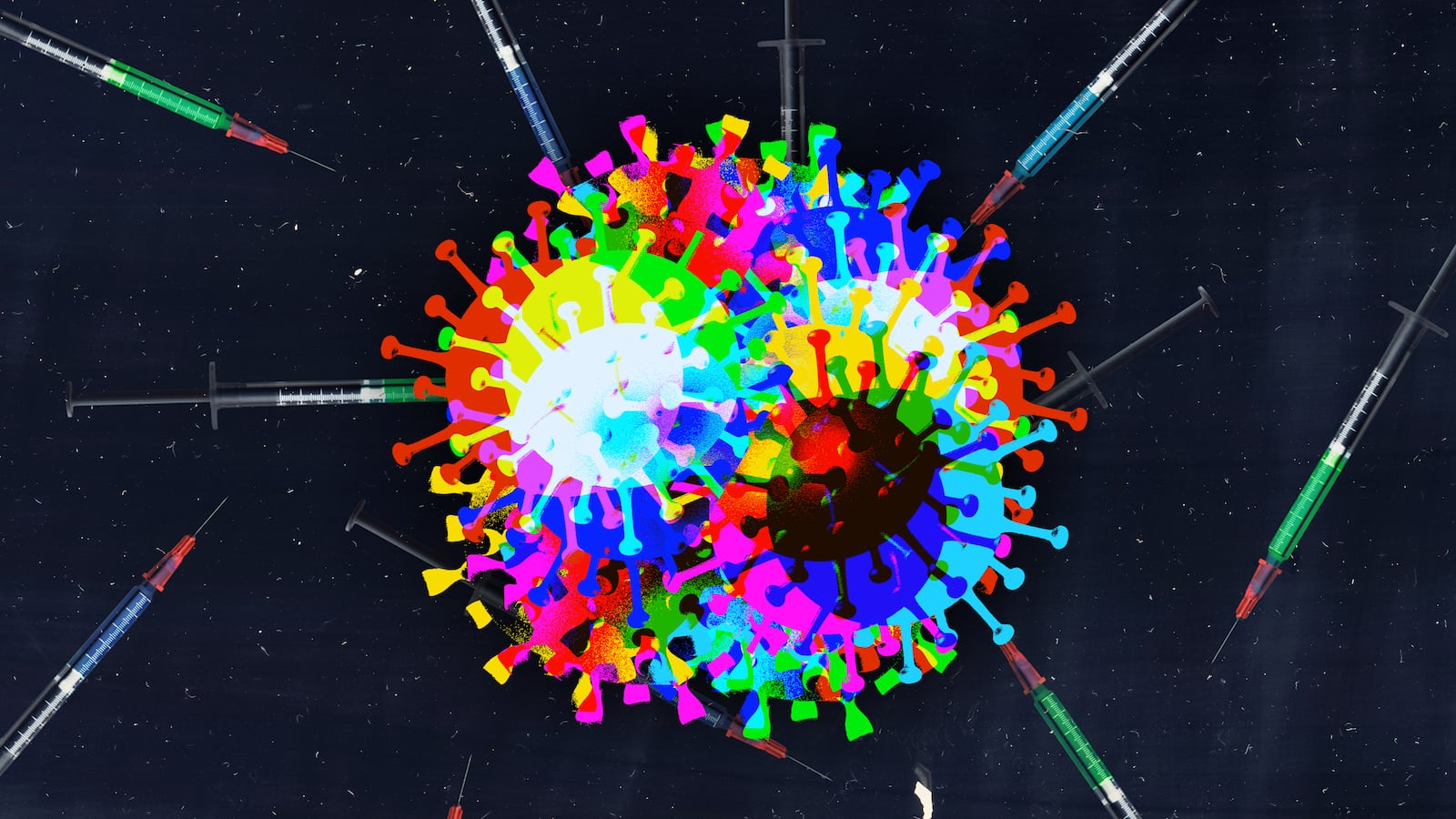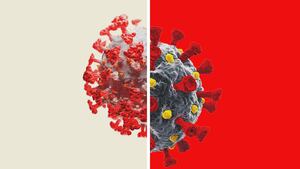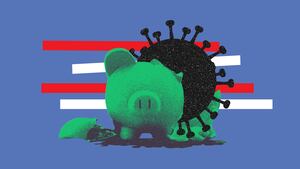The novel coronavirus, like all viruses, mutates and evolves. Fast. Variant after variant. Subvariants between the variants.
The virus is active. But our efforts to contain it are reactive. Thirty-four months into the COVID-19 pandemic, we still haven’t figured out a way to get ahead of the virus—and offer people immunity that endures even as the virus evolves.
That has to change, experts told The Daily Beast. And there are a lot of ways it could change, if we can focus our resources.
Broadly effective nasal vaccines that offer long-term immunity. Universal vaccines that should work against present and future variants. Or, at least, faster ways of rolling out new boosters.
But even the best new medicine is useless if people won’t take it. The public’s willingness to get vaccinated, rather than the availability of some new and better vaccine, could be the main reason we continue lagging behind the virus.
“How do we break out of the Groundhog Day loop?” University of Nebraska Medical Center infectious-disease expert James Lawler asked, referencing the 1993 Bill Murray comedy about a man trapped in one endlessly-repeating day. “I am not sure we will do that quickly.”
The novel coronavirus has steadily mutated since first leaping from animals to people in China back in late 2019. A year later, the early forms of the virus gave way to a more severe variant, Delta, which in turn was replaced by the more-contagious Omicron variant and its succession of subvariants—BA.1, BA.2, BA.4 and BA.5—starting last fall.
All of the major variants and subvariants feature changes on the spike protein, the part of the virus that helps it grab onto and infect our cells. Lately, more and more mutations are showing up on other parts of the virus, as well.
Yes, more than two-thirds of the world’s 7.8 billion people have been at least partially vaccinated. Billions have fresh natural antibodies from recent infection. This wall of immunity has prevented the worst outcomes. Hospitalizations and deaths are down from their most recent peak in February.
But there’s no sign the SARS-CoV-2 virus is slowing down. New variants are coming as mutations pile up. Anticipating a future where COVID is more or less a permanent problem, health officials all over the world are trying to come up with strategies not for defeating the virus, but managing it.
U.S. President Joe Biden is beginning to frame COVID as an annual problem, like the flu. On Tuesday, Biden encouraged Americans to get the new messenger-RNAs boosters that vaccine-makers Pfizer and Moderna tailored for Omicron and its subvariants.
More variant-specific boosters could follow, Biden announced. “As the virus continues to change, we will now be able to update our vaccines annually to target the dominant variant,” he said. “Just like your annual flu shot, you should get it sometime between Labor Day and Halloween.”
But there’s a problem with an annual approach to COVID mutations. Antibodies from even the best mRNA vaccines tend to fade after around four months. If you’re getting boosted just once a year, you could be under-protected for up to eight months at a time.
Maybe. The fact is, we don’t know for sure how well—and for how long—the new boosters will work. “We still need this information to know if that’s a viable strategy,” Peter Hotez, an expert in vaccine development at Baylor College, told The Daily Beast.
Equally problematic, health officials and the pharmaceutical industry are currently chasing variants—formulating new boosters based on whichever form of the virus is dominant at the time. But it takes months to reformulate the vaccines, get authorization from health officials in each of nearly 200 countries, then manufacture and distribute doses.
We’re moving slower than the virus. A new variant might evolve in the span of just a few months. But it took nearly a year to get an Omicron-specific booster to market. There’s a risk some new variant might have so many mutations that it evades the antibodies from a vaccine designed for the previous variant. In that case, the annual approach to boosting could result in an even longer gap in protection.
There are a number of ways to catch up with the virus, experts told The Daily Beast. Industry could formulate new boosters at a quicker pace—and government regulators could approve them faster.
Another approach is a vaccine you inhale instead of inject. A nasal vaccine could spur a broader and more lasting immune response, by targeting the parts of the body—the nose and throat—where SARS-CoV-2 prefers to lodge before spreading to the lungs and other organs.
There’s also the prospect of a universal “pan-coronavirus” vaccine that’s designed to induce immunity against SARS-CoV-2 and related coronaviruses, of which there are dozens.
These universal antibodies might be slightly less effective than antibodies for just one virus, but that somewhat reduced immunity should hold up even as a particular virus mutates into a radically different form. “Any potent set of antibodies that can neutralize an RNA virus like CoV-2 can select for escape mutants,” Barton Haynes, an immunologist with Duke University’s Human Vaccine Institute who is working on one universal jab, told The Daily Beast.
There are several nasal vaccines in development, including one at the University of Iowa—and around a dozen major universal vaccines in development, too. The two leading efforts are at the Coalition for Epidemic Preparedness Innovations in Norway and the U.S. National Institute of Allergy and Infectious Diseases.
But all of those efforts depend in part on government support. And the country with the deepest pockets, the United States, is closing the purse strings after years of generous support for COVID research.
Faster booster rollouts would also depend on government funding—as well as major reforms to the authorization processes in the countries whose regulators tend to lead the way. Again that means the United States, a country not necessarily known for its regulatory efficiency.
But there’s an even bigger obstacle. Vaccine and booster uptake has plateaued all over the world as the pandemic grinds toward its fourth year and fatigue sets in. In the U.S., just a quarter of people ages 50 to 64 got the first two boosters. Even if industry rolled out a fresh booster every few months and regulators swiftly approved it, would enough people get jabbed fast enough to slow the virus’s transmission?
Lawler said he’s skeptical. “The issue is that we will likely have very poor uptake of the new vaccines. Every booster dose has had diminishing uptake.”
Government messaging might help, but that too depends on funding that’s becoming scarcer. “We need an advocacy program to get people to accept annual or regular boosters, but so far that’s not happening,” Hotez said.
So the world is settling into an annual approach to COVID, but without the tools to make sure an annual strategy works. That’s not necessarily a huge problem right now, as billions of people still have antibodies from past infection.
But as those antibodies fade, we’ll face a choice. Induce antibodies with better and faster vaccines, or endure another huge wave of infections.
The alternative—pretending COVID is just going to go away—is naive. “I am truly puzzled at the widely-held assumption that the pandemic future is bright,” Lawler said. “This repeats the exact same errors in foresight we collectively exhibited for the past two years. I suppose I should have learned by now that we don’t learn.”







